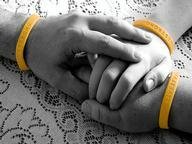Quiz Answer Key and Fun Facts
1. According to the National Cancer Institute, approximately how many women in the US will be diagnosed with breast cancer during their lifetimes?
2. Which of these is considered a risk factor that may contribute toward a woman getting the disease?
3. Men do not get breast cancer.
4. What is the name of the test most commonly used for early detection of breast cancer?
5. The American Cancer Society recommends women begin regular mammograms no later than what age?
6. As long as a woman has regular mammograms, there is no need for other preventive measures.
7. When an abnormality is located, a patient may be referred to a surgeon for further testing. The surgeon will likely perform a biopsy (needle, core tissue, and MRI guided are three common types). If the pathologist suspects cancer, surgery to remove the lump and surrounding tissue is often the next step. What is this procedure called?
8. After the surgery, the pathologist and surgical team will determine whether or not the disease is confined to the removed tissue. Further surgery and treatment may be necessary if abnormal cells are found in the lymph nodes or other areas of the breast. What is the name of the surgical procedure that is performed to remove a portion or all of the breast(s)?
9. You've just noticed a small lump in one of your breasts. Which is the best option for consulting your health care provider?
10. A close friend has just been diagnosed with breast cancer. What can you do to help?
Source: Author
Coonielady
This quiz was reviewed by FunTrivia editor
WesleyCrusher before going online.
Any errors found in FunTrivia content are routinely corrected through our feedback system.

